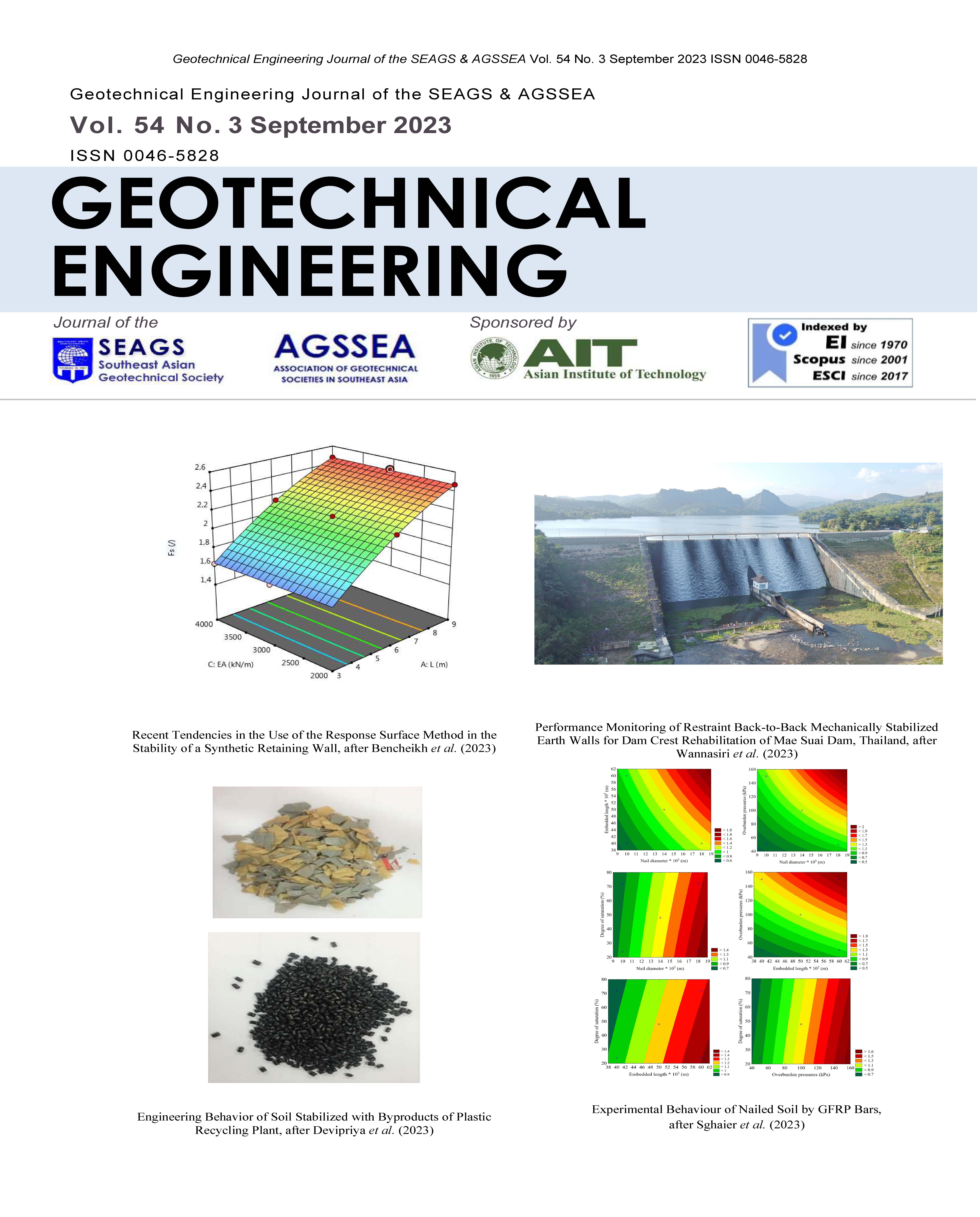Performance Monitoring of Restraint Back-to-Back Mechanically Stabilized Earth Walls for Dam Crest Rehabilitation of Mae Suai Dam, Thailand
Main Article Content
Abstract
The Mechanically Stabilized Earth walls (MSE walls) for dam crest rehabilitation was constructed at Mae Suai dam, Thailand. Welding mesh gabion was used as the facing on both sides, the polymetric geogrid and rebar were used as reinforcements. Furthermore, the MSE walls was placed on the original earth dam crest, steel sheet pile was installed at upstream and downstream side to prevent leakage and control the settlement of the new dam crest. The instruments were installed at various test sections to careful field monitoring to obtain high-quality data. The results obtained from 2D finite element method simulations were in good agreement with the field measurements, the lateral deformation and settlements were very small. The axial forces in rebar reinforcement were found to be continually changing due to deformation of foundation, external stimuli and construction factors. Likewise, the strain measured in all positions of geogrid reinforcement was very low. Combining steel reinforcement (high stiffness) with geogrid reinforcement (low stiffness) was redundant. Most of the lateral stresses are resisted by the former than the later. It can be concluded that in a reinforced soil wall that uses two or more types of reinforcing materials, tensile force is developed in higher stiffness material.
Article Details

This work is licensed under a Creative Commons Attribution-NonCommercial-NoDerivatives 4.0 International License.
Copyright © 2019 Association of Geotechnical Societies in Southeast Asia (AGSSEA) - Southeast Asian Geotechnical Society (SEAGS).


